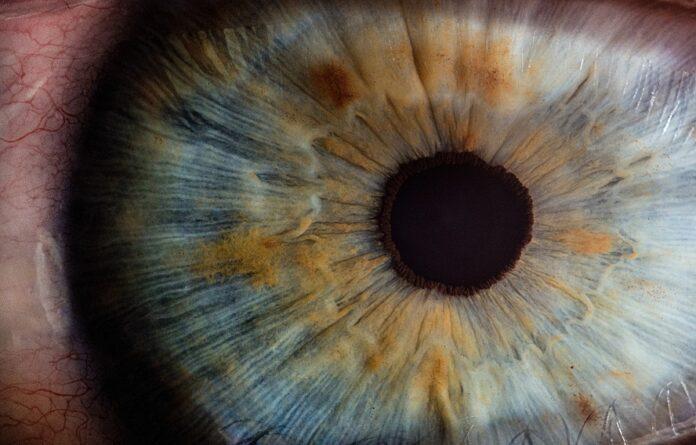Scientists have developed the first patient-derived stem cell แบบ of albinism. The model will help studying eye conditions related to oculocutaneous albinism (OCA).
Sเซลล์ ไม่เชี่ยวชาญ พวกเขาไม่สามารถทำหน้าที่เฉพาะในร่างกายได้ แต่สามารถแบ่งและต่ออายุตัวเองได้เป็นเวลานานและมีศักยภาพที่จะเป็นผู้เชี่ยวชาญและพัฒนาไปสู่ร่างกายได้หลายประเภท เช่น เซลล์กล้ามเนื้อ เซลล์เม็ดเลือด เซลล์สมอง เป็นต้น
Stem cells are present in our bodies at all stages of life, from เอ็มบริโอ to adulthood. Embryonic stem cells (ESCs) or fetal เซลล์ต้นกำเนิด จะเห็นได้ในระยะแรกสุด ในขณะที่เซลล์ต้นกำเนิดจากร่างกายซึ่งทำหน้าที่เป็นระบบซ่อมแซมร่างกายจะพบเห็นได้เมื่อเข้าสู่วัยผู้ใหญ่
Stem cells can be grouped into four: embryonic stem cells (ESCs), adult stem cells, โรคมะเร็ง stem cells (CSCs) and induced pluripotent stem cells (iPSCs). Embryonic stem cells (ESCs) are derived from inner mass cells of the blastocyst-stage of mammalian embryo that are three to five days old. They can self-renew indefinitely and differentiate into cell types of all three germ layers. On the other hand, adult stem cells serve as a repair system to maintain cell homeostasis in tissues. They can replace dead or injured cells but have limited proliferation and differentiation potential in comparison with ESCs. Cancer stem cells (CSCs) arise from normal stem cells that undergo gene mutations. They initiate tumours forming a large colony or clones. Cancer stem cells play important roles in malignant tumours hence targeting them could provide a way to treat cancers.
Induced pluripotent stem cells (iPSCs) มาจากเซลล์โซมาติกของผู้ใหญ่ pluripotency ของพวกมันถูกเหนี่ยวนำโดยการจำลองในห้องปฏิบัติการโดยการตั้งโปรแกรมเซลล์โซมาติกใหม่ผ่านยีนและปัจจัยอื่นๆ iPSC เป็นเหมือนเซลล์ต้นกำเนิดจากตัวอ่อนในการเพิ่มจำนวนและการสร้างความแตกต่าง iPSC ตัวแรกได้รับการพัฒนาจากมิวรีนไฟโบรบลาสต์โดยยามานากะในปี 2006 ตั้งแต่นั้นมา iPSC ของมนุษย์หลายตัวได้รับการพัฒนาจากตัวอย่างเฉพาะผู้ป่วย เนื่องจากพันธุกรรมของผู้ป่วยสะท้อนให้เห็นในพันธุกรรมของ iPSC เซลล์โซมาติกที่ได้รับการตั้งโปรแกรมใหม่เหล่านี้จึงถูกใช้เพื่อสร้างแบบจำลองโรคทางพันธุกรรมและได้ปฏิวัติการศึกษาความผิดปกติทางพันธุกรรมของมนุษย์
แบบจำลองคือสัตว์หรือเซลล์ที่แสดงกระบวนการทางพยาธิวิทยาทั้งหมดหรือบางส่วนที่สังเกตพบในโรคที่เกิดขึ้นจริง ความพร้อมใช้งานของแบบจำลองการทดลองมีความสำคัญต่อการทำความเข้าใจการพัฒนาของโรคในระดับเซลล์และระดับโมเลกุล ซึ่งช่วยในการพัฒนาวิธีการรักษา แบบจำลองช่วยในการทำความเข้าใจว่าโรคพัฒนาขึ้นอย่างไรและในการทดสอบแนวทางการรักษาที่เป็นไปได้ ตัวอย่างเช่น เราสามารถระบุเป้าหมายของยาที่มีประสิทธิผลด้วยความช่วยเหลือของแบบจำลองหรือคัดกรองโมเลกุลขนาดเล็กที่สามารถลดความรุนแรงและหยุดการลุกลามของโรคได้ โมเดลสัตว์มีการใช้งานมานานแล้ว แต่มีข้อเสียหลายประการ นอกจากนี้ แบบจำลองสัตว์ไม่เหมาะสำหรับความผิดปกติทางพันธุกรรมอันเนื่องมาจากความแตกต่างทางพันธุกรรม ปัจจุบัน สเต็มเซลล์ของมนุษย์ (เอ็มบริโอและพลูริโพเทนต์เหนี่ยวนำ) ถูกนำมาใช้มากขึ้นเพื่อสร้างแบบจำลองโรคของมนุษย์
การสร้างแบบจำลองโรคโดยใช้ iPSC ของมนุษย์ประสบความสำเร็จมาแล้วหลายครั้ง เงื่อนไข เช่น เส้นโลหิตตีบด้านข้าง, ความผิดปกติของเลือด, เบาหวาน, โรคฮันติงตัน, กล้ามเนื้อลีบกระดูกสันหลัง ฯลฯ มีจำนวนที่ดี โมเดล iPSC ของมนุษย์ of human neural diseases, congenital heart diseases and other genetic ความไม่เป็นระเบียบs.
อย่างไรก็ตาม โมเดลมนุษย์ผิวเผือก iPSC ของมนุษย์ไม่สามารถใช้งานได้จนถึงวันที่ 11 มกราคม พ.ศ. 2022 เมื่อนักวิทยาศาสตร์จาก National Eye Institute (NEI) ซึ่งเป็นส่วนหนึ่งของ National Institutes of Health (NIH) รายงานว่ามีการพัฒนาแบบจำลองในหลอดทดลองของมนุษย์โดยใช้ iPSC สำหรับ เผือกตา (OCA)
Oculocutaneous albinism (OCA) is a โรคทางพันธุกรรม affecting pigmentation in the eye, skin, and hair. The patients suffer eye problems like reduced best-corrected visual acuity, reduced ocular pigmentation, abnormalities in fovea development, and/or abnormal crossing of optic nerve fibres. It is thought that improving eye pigmentation could prevent or rescue some of the vision defects.
The researchers developed an in-vitro model for studying pigmentation defects in human retinal pigment epithelium (RPE) and showed that the จอประสาทตา pigment epithelium tissue derived in vitro from patients recapitulates the pigmentation defects seen in albinism. This is very interesting in view of the fact that animal models of albinism are unsuitable and there is limited human cell lines to study melanogenesis and pigmentation defects. The patient-derived OCA1A- and OCA2-iPSCs developed in this study can be a renewable and reproducible source of cells for the production of target cell and/or tissue types. In vitro derived OCA tissues and OCA-iRPE will allow deeper understanding of how melanin formation takes place and identify molecules involved in pigmentation defects, and further probe for molecular and/or physiologic differences.
นี่เป็นขั้นตอนที่สำคัญมากในการมุ่งสู่เป้าหมายในการรักษาโรคเผือกตา (OCA)
***
อ้างอิง:
- Avior, Y. , Sagi, I. & Benvenisty, N. เซลล์ต้นกำเนิด Pluripotent ในการสร้างแบบจำลองโรคและการค้นพบยา Nat Rev Mol Cell Biol 17, 170–182 (2016). https://doi.org/10.1038/nrm.2015.27
- Chamberlain S., 2016. การสร้างแบบจำลองโรคโดยใช้ iPSC ของมนุษย์. Human Molecular Genetics, Volume 25, Issue R2, 1 ตุลาคม 2016, หน้า R173–R181, https://doi.org/10.1093/hmg/ddw209
- Bai X., 2020. การสร้างแบบจำลองโรคจากเซลล์ต้นกำเนิดและการบำบัดด้วยเซลล์. เซลล์ 2020, 9(10), 2193; https://doi.org/10.3390/cells9102193
- จอร์จ เอ. อัล et 2022. การสร้างแบบจำลองโรคในหลอดทดลองของ Oculocutaneous Albinism Type I และ II โดยใช้ Human Induced Pluripotent Stem Cell-Derived Retinal Pigment Epithelium (2022) รายงานสเต็มเซลล์ เล่มที่ 17 ฉบับที่ 1 P173-186 วันที่ 11 มกราคม 2022 DOI: https://doi.org/10.1016/j.stemcr.2021.11.016
***






































